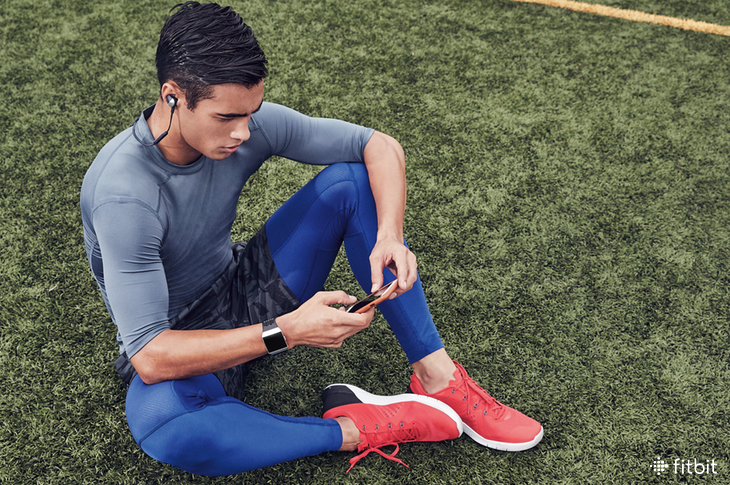
No matter if you’re an experienced athlete or a first-time competitor, the key to getting fitter, faster, and stronger is increasing the time and intensity of your daily workouts.
But there’s a fine line between consistently challenging yourself and developing overtraining syndrome—a physical state that is often characterized by persistent fatigue, irritability, and a marked decline in performance and from which it can take weeks or months to recover.
Over the years, athletes, coaches and sports researchers have searched for physiological markers that could signify when an athlete was about to cross that line. Heart rate is believed to be one such marker.
Can Resting Heart Rate Predict Overtraining?
It’s common for coaches to instruct their athletes to keep track of their resting heart rate (RHR)—the number of times the heart beats per minute (bpm) when the body is awake and at rest—by taking their pulse first thing in the morning. An elevated resting heart rate (~5 bpm) can be an indication that your body is under stress—from too much training, insufficient recovery time, impending illness, or life stressors. The only problem: There’s no way to tell which type of stressor is the culprit.
To zero in on the effect of training stress, sports scientists began investigating whether heart rate variability (HRV)—the time lapse between heartbeats—could more accurately measure overtraining syndrome. “The general premise is that if you are highly stressed or overtrained, you’ll see abnormalities above or below your normal levels,” says Daniel Plews, Ph.D., a senior sports scientist at High Performance Sport New Zealand.
In 2012, Plews published a case study of two elite triathletes in the European Journal of Applied Physiology in which weekly HRV averages successfully predicted overtraining in one of the athletes. For both RHR and HRV, comparing weekly averages is best, as non-training factors, including sleep and nutrition, could influence the daily measurement. (To see your weekly and monthly RHR averages in the Fitbit app, tap the heart rate tile on your dashboard and then the graph at the top of the screen. Note: Fitbit devices with PurePulse can measure HRV but do not share that data with users at this time. If this is a feature you’d like to see, vote for it here.)
The Best Way to Predict Overtraining Syndrome
While professional and elite athletes may benefit from the type of detailed data regular HRV tracking provides, most people would do just as well to use heart rate data as an adjunct to other signs and symptoms of overtraining, says Eugene Chung, M.D., a sports cardiologist at the University of Michigan and a member of the American College of Cardiology’s Sports and Exercise Cardiology Council.
“As much as this data is interesting and helpful, the baseline heart rate and heart rate variability can be affected by so many factors, it’s hard to rely on that alone to determine whether you’re overtraining,” says Dr. Chung. “You also need to look at the overall picture.”
That overall picture should include an assessment of whether you’re experiencing other common signs and symptoms of overtraining. Here are four to watch out for:
Fatigue that is out of proportion to the expected level of exertion during training or at rest.
Prolonged recovery, as evidenced by the inability to bounce back from a hard workout in 48 hours or less.
Decreased immunity (or an increasing number of colds and flu). In the triathlete study mentioned above, the overtrained athlete eventually developed shingles, a reactivation of the herpes zoster virus that frequently accompanies stress or overwork.
Insomnia. It’s normal to not sleep right before a big race, but if sleeplessness lasts more than a few days, it might be time to dial back on training—or check with a doctor.
If you start to develop symptoms of overtraining, scale back your training load. “Resting and keeping an eye on how you’re feeling, while eyeballing both your RHR and HRV, are good ideas,” says sports physiologist Paul Laursen Ph.D, who along with Plews, founded Plews and Prof Lab, a community dedicated to helping individuals maximize their performance in work, sport, and life. “Start back with easier aerobic training before resuming full training.”
This information is for educational purposes only and is not intended as a substitute for medical diagnosis or treatment. You should not use this information to diagnose or treat a health problem or condition. Always check with your doctor before changing your diet, altering your sleep habits, taking supplements, or starting a new fitness routine.

I have been using an HRV app and a chest strap to measure heart rate variability for more than five months now. Before that I used my fitbit resting heart rate alone but with less success. Daily hrv readings have proven to be a dependable way to know whether to exercise or not and how hard on a given day. Since beginning to measure hrv, I am exercising more frequently and with more intensity because I am able to balance exercise and recovery more effectively than before. It would be so great to have hrv readings from fitbit.